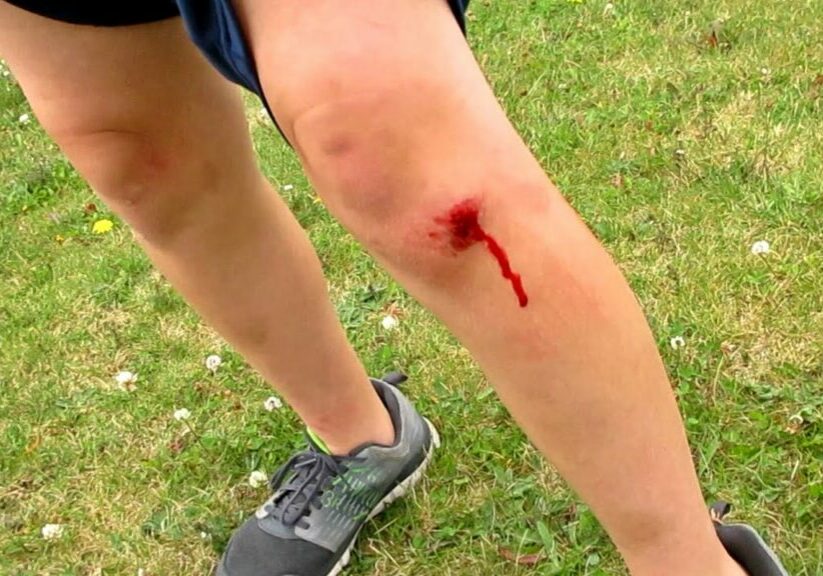Strong standard, but weak compliance in schools The Public Employees Occupational Safety and Health (PEOSH) Bloodborne Pathogens (BBP) standard is clear. It requires that staff who could be exposed to blood be trained in the requirements of the standard, be offered Hepatitis B vaccinations, and receive a health evaluation within hours of actual blood exposure.
But school nurses, coaches, and others interviewed for this article report important gaps in coverage in their districts. Because it is up to each district to decide which staff members are likely to be exposed to blood, many potentially ex- posed staff are not covered. Many school staff members don’t know what to do for exposures that take place during after-school activities when no school nurse is on duty.
Such gaps are unacceptable given that the BBP standard has been on the books for almost 20 years. Lo- cal associations can play a key role in moving districts toward better compliance. Locals should consider all potential risks for BBP exposure among staff and review their districts’ compliance plans to ensure that staff members are trained and protected.
Who is covered?
The standard requires cover- age of anyone whose job duties include potential exposure to blood or other bodily fluids (such as saliva, vomit, sweat, tears, urine and feces) if these fluids are contaminated with blood. In many districts, coverage is limited to designated first-aid providers, such as nurses. In other districts, nurses and teachers are covered, but custodians are not. Some districts cover all employees.
A written job description should never be the sole consideration in deciding who is covered. What hap- pens in practice is more important.
Examples of staff who should be covered include:
- Bus drivers, security guards and classroom teachers who break up fights.
- Custodians who clean up blood, vomit, urine or feces, broken glass, or needles.
- Athletic directors, who have frequent exposure to blood from injuries, es- pecially in wrestling and football.
Blood exposure scenarios
Persons exposed to bloodborne pathogens are at risk for serious or life-threatening illnesses. The federal Occupational Safety and Health Administration describes bloodborne pathogens as infectious microorganisms present in blood that can cause disease in humans. These pathogens include, but are not limited to, hepatitis B virus; hepatitis C virus; and human immunodeficiency virus (HIV), the virus that causes AIDS.
Exposure on the job can occur in many ways:
- Contaminated blood contact through a wound in the skin, including skin that is abraded, chapped, burned or has dermatitis.
- A splash to the eyes, nose or mouth.
- Puncturing the skin with a contaminated sharp object, such as broken glass, needles or knives.
- For Hepatitis B, exposure from a deep bite or contact with dried blood.
Hepatitis B is of the greatest concern because it is 50 to 100 times more infectious than HIV/ AIDS. Hepatitis B virus can survive on surfaces for a week or more.
Nearly all students are vaccinated by state law. Students transferring from outside New Jersey have a 30-day grace period to produce documentation of vaccination.
Nonetheless, there is no way to know who is infected, so the standard requires assuming all blood is contaminated. The hepatitis B vaccine offers more than 90 percent effectiveness for vaccinated staff, should exposure occur. Currently there are no vaccines for hepatitis C or HIV/AIDS.
The PEOSH BBP standard
Employers must prepare a written plan that includes job classifications and tasks of covered employees, administration of the hepatitis B vaccine for covered employees, procedures for potential exposure situations, training, and recordkeeping of employee training and exposures.
The plan must be accessible to employees and updated at least annually.
Because prevention is better than treatment, the federal Occupational Safety and Health Administration BBP standard, adopted by PEOSH in 1993 and revised in 2003, emphasizes prevention through the measures listed below.
- Hepatitis B vaccine: Must be offered at no cost to covered employees within 10 days after beginning their job, during work hours, with reim- bursement for any travel or copay costs. Newly immunized nurses must be offered an antibody blood test two or three months later to confirm that the vaccine was effective. Employees may decline the vaccination by sign- ing a written statement.
- Universal precautions: Handle all human blood and other potentially infectious materials as if they were contaminated.
- Engineering controls: Whenever possible, use methods that contain or remove the hazard, such as punctureresistant containers for sharps.
- Personal protective equipment: When exposure cannot be avoided by other means, appropriate personal protective equipment should be used, such as gloves and goggles.
- Standard procedures: Hand washing following contact with potentially infectious materials and after remov- ing gloves (because gloves are not completely impermeable) should be done as soon as possible; potentially contaminated sharp objects must be disposed of in puncture-resistant, leak-proof, labeled containers.
- Housekeeping: Employers must establish written procedures for regular cleaning of the work site and disinfecting contaminated surfaces and materials. Disinfecting can be done by soap and water followed by bleach diluted one part to 10 parts water. Tongs or a brush and dustpan must be used to pick up potentially contaminated sharps; vacuum clean- ers are never suitable.
